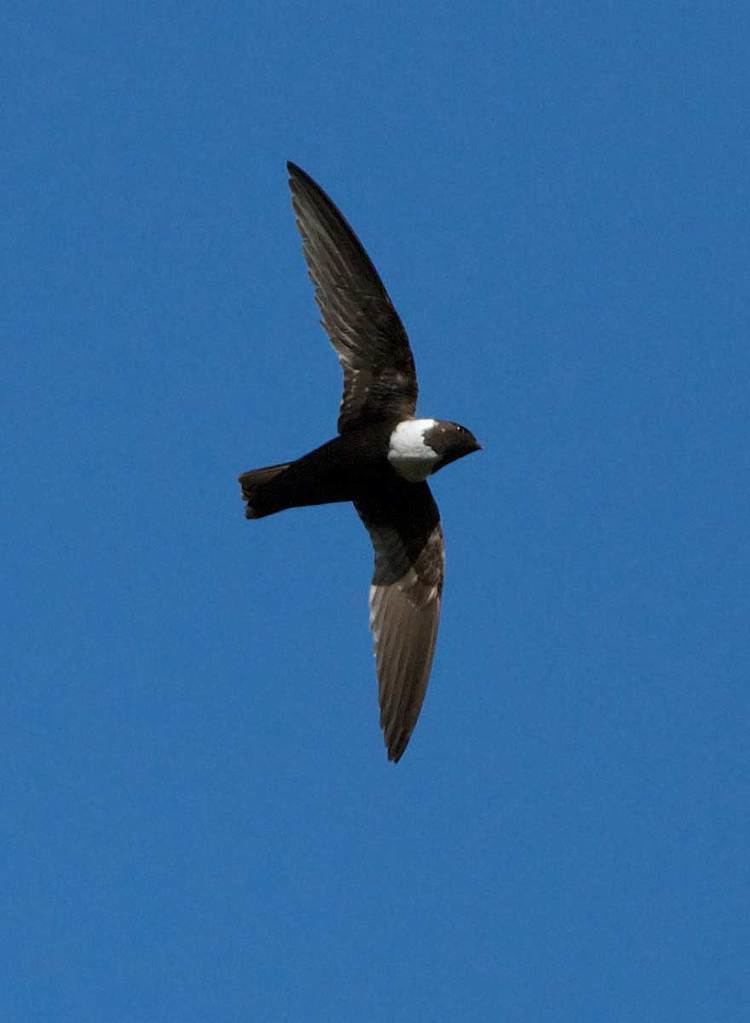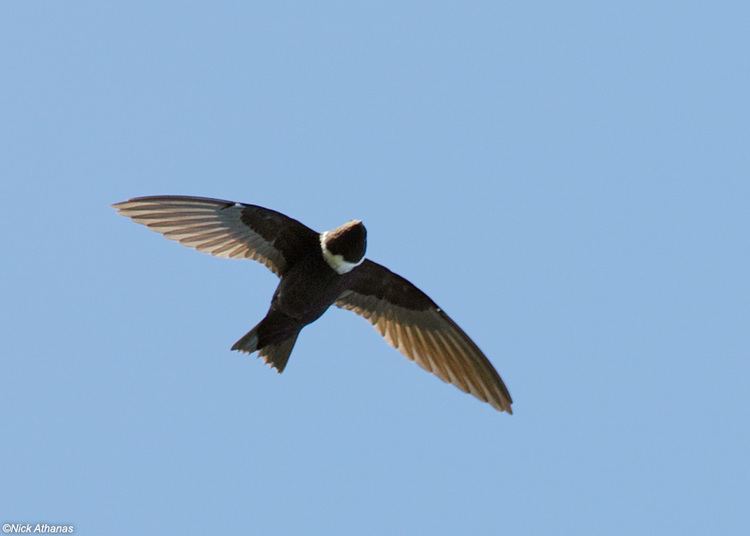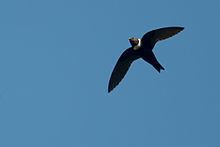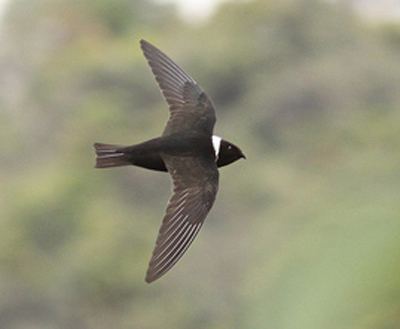Phylum Chordata Rank Species | Family Apodidae Scientific name Streptoprocne zonaris Higher classification Streptoprocne | |
 | ||
Similar Streptoprocne, Bird, Swift, Chestnut‑collared swift, Southern rough‑winged swallow | ||
White collared swift
The white-collared swift (Streptoprocne zonaris) is a resident breeding bird from central Mexico, the Greater Antilles and Trinidad south to Peru, northern Argentina and southeastern Brazil.
Contents
This very large swift builds a saucer nest of mud, moss and chitin on a ledge in a cave, usually behind a waterfall, and lays two white eggs between March and July. It breeds in the mountains and foothills, but forages over a much larger area, including lowlands.

Description

White-collared swift is a massive and powerful species, 20–22 cm (8–8.5 in) long, and weighing 90–125 g (3.2–4.4 oz). It is the largest species of swift in its range exceed in southwestern Mexico, where it may co-exist with its slightly larger cousin, the white-naped swift, which is one of the two largest swifts in the world. The white-collared swift has a wingspan of 45 to 55 cm (18 to 22 in). It has a very slightly forked tail, which often appears square. The adults are black, glossed blue on the back, and have a white collar, broader and duller on the breast than the hindneck. Young birds are duller than adults, and the collar is reduced or absent.
Behavior and Ecology

This is a highly gregarious species, with flocks of 100 or more birds, and often in company with other swift species. It has a powerful, fast and direct flight, and will ascend thermals to great heights. White-collared swifts are known to attain or exceed flying speeds of 70 to 100 km/h (43 to 62 mph) despite their relatively large size. This noisy swift has a screeching chee-yar! call, which may be given in chorus by a flock. A flock will also make a "wooshing" sound as their wings beat against the wind.

White-collared swift feeds in flight on flying insects, including beetles, bees and flying ants. This species breeds in April to May, early in the wet season to correspond with a peak number of insect prey, building a cup nest out of mud, moss and reguritated, grounded insect parts (the same matter that is later fed to the nestlings), each nest measuring 120–170 mm (4.7–6.7 in) in diameter with a depths of 30–90 mm (1.2–3.5 in). Nests are located on ledges and nooks along the cave walls. Two eggs are laid and the nesting stage ends when young become independent of their parents at 45–55 days. In Mexico, their only verified predators are Virginia opossums, which raid and eat the young in nests, and peregrine falcons, which are known to wait near colony entrances to pick off birds as they first fly off.

